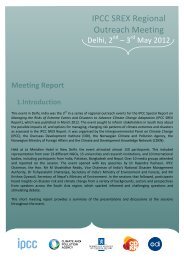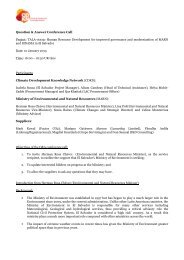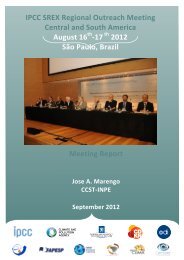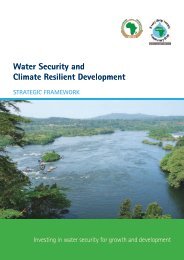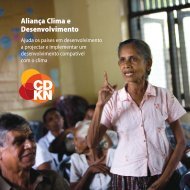Implementation Plan - CDKN Global
Implementation Plan - CDKN Global
Implementation Plan - CDKN Global
- No tags were found...
Create successful ePaper yourself
Turn your PDF publications into a flip-book with our unique Google optimized e-Paper software.
DELIVERING TRANSFORMATIONAL CHANGE 2011-21Adaptation, mitigation and developmentLow-carbon and mitigation actions are often considered as separate and distinct from those concernedwith adaptation and resilience building to a changing climate and indeed to wider sustainable developmentobjectives. However, this can create potential problems if proposed actions are not assessed against a compositerange of mitigation, adaptation and development goals (It is also one of the reasons why this <strong>Implementation</strong><strong>Plan</strong> proposes policy convergence and alignment using a twin-track approach, (see section 2.2)An example of the relationship between creating a mitigation/low-carbon development action and an adaptation/resilience building action can be seen in energy and water resource management, where the mutual benefits arelikely to be missed if actions in both areas are developed in isolation. Energy and water are inextricably linkedas can be seen, for example, in hydro-power schemes and bio-fuel production.It is clearly important that the investment in any project delivers wider benefits beyond the initial adaptation orlow-carbon or development objectives that the project was originally designed to achieve. Failure to considerthe linkages to the other objectives may lead to missed opportunities, maladaptation and a requirement foradditional investment at a later date. For example:• Improving the energy efficiency of buildings also provides an opportunity to increase the resilience ofcommunities to extreme weather events (e.g. heat waves, storms, etc.), because the improvementsrequired in building design and construction to improve their thermal efficiency can be similar tothose needed to increase their resilience to extreme events.• The cost of increasing the resilience of buildings to extreme events can be a more compellinginvestment case if the additional energy savings are taken into account.• Investment in energy efficient buildings might also enable additional finance to be secured from thecarbon markets. This finance would not be available if mitigation is not considered when developingadaptation actions for buildings, (Glenmarec 2011).Financing by national governmentsThe concept of national sustainable development roadmaps is not new. It is clear however that there areadvantages if countries focus their wider strategic planning and operational investment taking into account:• The importance of mapping-out the pathways to reduce the dependency on fossil fuels for theeconomy and by key sectors. This is an imperative and should be completed as a national prioritywithin 2 years.• The need to invest in public debate and engagement on low-carbon development planning andactions. The changes required and their scale and implications necessitate a level of communicationand engagement that is perhaps unprecedented.65



